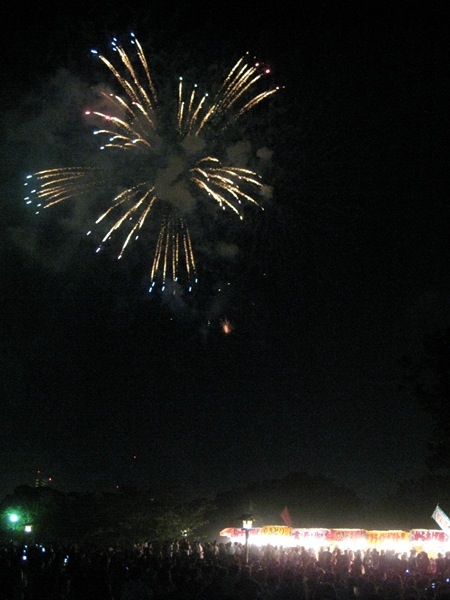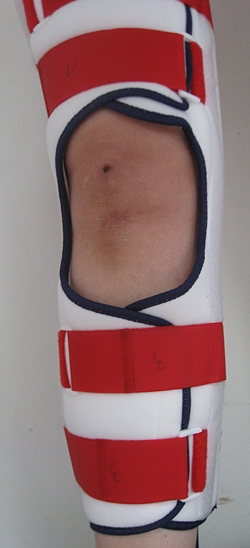
A short overview over posts on randform which deal with nuclear science, in
particular the ones including information about (new) nuclear power generation.
funding declaration: Me, the author of the posts was supported in the time of writing the below linked posts by no other source than personal income from teaching at Berlin high schools, working as a visiting assistant professor at the Department of Mathematics at Kyushu University (Fukuoka, Japan), as a wissenschaftlicher Mitarbeiter at the Department of Physics at Ludwig-Maximilians-Universität (Munich,Germany) and by my husband Tim’s income as a professor at Kyushu University and at the Technical University of Munich. The blog posts were written in my freetime, they are my private views and they have nothing to do with the above mentioned sources of income.
update July 25th, 2020: From 2015 until 2020 I worked part-time in a company which produces and provides IT services around the asset management of utility providers. The posts during that time were written in my free time and are still solely my opinion.
intention of posts:
The intention of the posts was to raise awareness about the problems of nuclear power generation and to gather scientific information about this issue. Last but not least it was arising from the wish to accumulate scientific facts which should serve to justify my claim that given todays situation one should better refrain from using commercial nuclear power generation. The claim was stated first in this post. Note that I do think that nuclear energy for medical applications should be supported. I think also that nuclear research in general should be supported, however not on the expense of research in more environmentally friendly technologies and basic research. Note also that nuclear science has not been my most favorite science topic, but that I regard it rather as my duty as a physicist to inform the public about the risks.
The intention of this overview is to link together the separate blog posts on randform in order to make the line of argumentation more visible.
I often cite information at the website of the world nuclear association, because this site is rather detailled and written by experts and because it is rather a pro-nuclear source. I think it is less helpful to use anti-nuclear resources (like Greenpeace etc.) if one wants to make a case against the use of commercial nuclear power generation.
A main topic in the nuclear discussion on randform is that I tried to explain that typical claims like “nuclear has been safe for a long time” are more or less void, since a lot of new and/or different nuclear technology than nowadays technology will have to be installed.
The question of the limited supply of Uranium 235 which amongst others makes the increased use of nuclear breeder reactors very likely (nuclear breeders are nuclear reactors, which may “breed” (i.e. produce) new material for nuclear power generation) had thus been discussed already in one of the first posts on that issue on July 17th 2007 (a birthday post):
http://www.randform.org/blog/?p=1336 “on nuclear energy”
Especially fast breeders are currently not as common as other types of nuclear power plants (according to world nuclear there have been altogether 20 fast neutron reactors since the fifties, very few of them for commercial power generation – as a comparision there are currently some 440 nuclear power reactors in use, I couldn’t find a number how many reactors were in use since the fifties, but according to world nuclear there are (as of today) 14170 reactor years of civil nuclear power and 390 reactor-years experience with fast reactors.
An introduction to the different materials used in breeders and the basic build-up of a breeder is given in that post, as well as an overview and calculation of how much nuclear energy may contribute and contributes to world energy production.
One distinguishes two main types of breeders: Fast breeder reactors (FBR) or short fast breeders and thermal breeders.
In the post “on nuclear energy” fast breeders are mentioned in particular and a link to a post about Russia’s nuclear energy plans (which includes FBRs) and climate change from May 9th 2007 at
http://www.randform.org/blog/?p=1156 “change” is given.
(short supplement on the “fast” and “thermal” in front of the word “breeder”: In a nuclear fission reaction a neutron splits an atom. In the reaction new neutrons are released (usually two to three new neutrons) . These new neutrons can again split an atom. Since the number of neutrons is approximately doubled after every split the number of neutrons involved in such a reaction grows rapidly. This is called a chain reaction. In nuclear reactors one manages to control a chain reaction by controling the number of neutrons, which may split atoms. In the control of such a reaction the velocity of the neutron plays an important role. Thus there are fast neutrons or neutrons which have been slowed down, called thermal neutrons. Fast breeders are fast neutron reactors which breed (sofar most conventional fast neutron reactors breed), thermal breeders are breeders with neutrons that had been slowed down. Different materials react differently upon wether a neutron is fast or thermal. The control of a chain reaction in a fast neutron reactor is harder than in a thermal reactor. A failure to control a chain reaction properly may result in a nuclear melt down )
One big problem with breeder technology -apart from e.g. safety problems- is amongst others that breeders may fuel a plutonium market. As was described in the post “on nuclear energy” plutonium 239 has to be bred in breeders. The post from Oct. 10th 2007 at
http://www.randform.org/blog/?p=1526 “nuclear energy in the US”
mentions that this plutonium can be used in other types of reactors, which are partly going to be newly built. These reactors are using MOX fuel – a mixture of Plutoniumoxide and other ingredients (there exists also Thorium-Mox). It is not mentioned in this post but should be mentioned that also existing reactor types may be (re)licensed to use MOX fuel. From the world nuclear association (see MOX use):
The use of up to 50% of MOX does not change the operating characteristics of a reactor, though the plant must be designed or adapted slightly to take it. More control rods are needed. For more than 50% MOX loading, significant changes are necessary and a reactor needs to be designed accordingly.
Even Thorium reactor types, which some people would like to dub “green” often include the use of plutonium, this was first mentioned at the example of India’s nuclear energy program, in a longer discussion with a randform reader:
http://www.randform.org/blog/?p=1841 “nuclear future-part II”
The first part of the discussion is at
http://www.randform.org/blog/?p=1840 “nuclear future.”
(see also the citation in the introduction to this post)
That is also these reactor types may fuel a plutonium market. Plutonium causes high proliferation problems, it is rather difficult to handle and transport, it causes more severe waste problems (like MOX fuel seems to be usually recycled only once).
According to world nuclear association:
Fast neutron reactors allow multiple recycling of plutonium, since all transuranic isotopes there are fissionable, but in thermal reactors isotopic degradation limits the plutonium recycle potential and most spent MOX fuel is stored pending the greater deployment of fast reactors.
Or in other words if you want to mitigate the waste problem then more fast breeders (FBRs) have to be built. And in the turn FBRs usually need to use highly enriched uranium or plutonium for operation, which fires again the plutonium market.
The motivation for the use of plutonium in the case of Indias nuclear power program are mostly economic ones. Economic considerations play also a role in the maintanance and safe-guarding of nuclear energy as is displayed in the post:
http://www.randform.org/blog/?p=2439 “about inspection optimization in nuclear energy”
Economical considerations are playing also a role in the operational life-span extension of nuclear power plants in Germany:
http://www.randform.org/blog/?p=2888 “national cuts”
(Not mentioned in the post: here the german electricity market has to compete with the european market which is under strong pressure last but not least due to the french electricity generation from nuclear power plants.)
Economic considerations play also a role in the use of breeders, since the availability of Uran 235 could be e.g. greatly enlarged via seawater extraction. They play also a role in research funding. (There are a couple of posts related to that issue, but I don’t list them here now).
Not only for this reason the role of economy, optimization and competition had been discussed in many separate posts on randform.
addition 26.02.2013: In particular, if there are no economic counter measures then it is not too unlikely that the nuclear waste problem may aquire similar dimensions as the CO2 problem (here CO2 is seen as a “waste product” from energy production). You may want to read about that problem at this post at the Azimuth project which is part of an article draft.
I haven’t written sofar much on nuclear accidents, dangers and the problems with nuclear waste however there is a bit on randform:
Nuclear energy generation is growing, see e.g. the articles about
Plans For New Reactors Worldwide or Nuclear Renaissance at the world nuclear association.
The above mentioned post “on nuclear energy” gives a calculation how an increase of nuclear energy looks like with respect to world wide energy production. It is also mentioned there that an increase of nuclear energy leads to a manifold increase of the nuclear waste problem, since nuclear waste is currently accumulating.
Thus this has been also pointed out as a special topic in the
Statement at International Conference on Management of Spent Fuel from Nuclear Power Reactors of the IAEA. Interestingly among others the statement says:
A key issue for storage is that the fuel (and facilities) must not deteriorate and that one must be sure of being able to remove the fuel (or sometimes the full cask) at the end of the storage period. Although the experience so far is very good, new challenges are connected to the trend of increasing burn-up. The IAEA SPAR projects are designed to collect information on fuel and facility behaviour.
You would assume that it shouldn’t be necessary to point out that storage facilities shouldn’t deteriorate, however the IAEA considers this to be necessary. In particular if you look on the IAEA website it looks like (at least to me, however not everything is open accessible) as if the IAEA is not getting very much information about the waste in the respective countries. As an example: if you look on Germany’s country waste profile report one sees that the description is not very detailled. (Apart from this fact the report is using a lot of unexplained abbreviations (page cannot be found), so I I couldn’t assess for example wether the dump site ASSE is included (it seems to me not).) I also couldn’t find a map, which shows the sites.
The problems of the documentation of dumb sites and information about the dump sites at Gorleben and ASSE had been adressed in the randform post:
http://www.randform.org/blog/?p=2018 “about gorleben”
In particular in this post it is described how new very small reactors are currently been constructed, which makes the problem of controling nuclear waste even worse.
Here some examples about leaking incidents:
A sodium leak at the breeder in Monju, Japan:
http://www.randform.org/blog/?p=1888 “nuclear bombs and Monju”
A problem with leaking waste in France:
http://www.randform.org/blog/?p=1875 “about the leakage at Tricastin”
A problem are also military sites, which are even more prone to be less documented. Here an example of a military dump site near San Francisco, USA and a discussion about at increased occurence of certain types of cancers:
http://www.randform.org/blog/?p=1832 “just waste”
However even the operation of current conventional types of nuclear reactors seems to be not so safe as one would think. Here a post about a study, which revealed that children who are living in the vicinity of a german nuclear power plant are more likely to die from childhood Leukemia:
http://www.randform.org/blog/?p=1629 “on a recent study of increased risk of cancer in the vicinity of german nuclear power plants”
This study has been supported by another study described in the randform post:
http://www.randform.org/blog/?p=2261 “On the socalled Greiser-study”
Since the german government just decided to extend the life-time of nuclear power plants there is probably more data to be gathered.
supplement 26102014: The post “remarks on latent nuclear risks in the vicinity of nuclear plants” gives mostly an update on childhood Leukemia studies in Europe.
supplement 05.10.10:
The randform post at http://www.randform.org/blog/?p=2023 “nuclear vehicles” contains an essay on electric cars and nuclear energy.
In the randform post http://www.randform.org/blog/?p=2023: “nuclear prognosis” further links for the assertion, that nuclear power generation is growing, are given.
supplement Jan 10 2012:
Although we were almost immediately very concerned when we heard about the disaster in Fukushima , we postponed to comment on it here immediately for several reasons.
The following posts deal not only of course also with the Fukushima disaster:
Fukushima, calculations and comments from march 14 2011 gives general information about the Fukushima disaster and in particular about the chances to induce artificial rain.
about the Fukushima plant from march 18 2011 links mostly to sites which monitored Fukushima.
criticality from march 29 2011 links to comments about possible criticality events in Fukushima
Fukushima and nuclear power from April 4 2011 links to a comment about Fukushima and Chernobyl.
power from where? from April 11 links only to a Geiger counter but provides a discussion about smart grids in Germany and a link to the role of economy in energy production.
25 years after the Chernobyl disaster from April 26 2011 commemorates Chernobyl and links to a discussion about Fukushima.
The post reactor reaction from July 27 2011 deals with the traveling wave reactor (TWR) and in particular that a critical randform comment to the reactor design seemed to have been quite right.
destructive sides of the power of science from August 7 2011 commemorates Hiroshima and contains a link to a comment where randform tries to explain some arguments that Germany’s renunciation of commercial nuclear power generation leads to more carbon output are flawed.
from the lost radioactive property office from Nov. 11 is a short post about an occurrence of a very small temporal radiation in Europe, where the source couldn’t be found
mini nuclear reactors from Jan 9 2012 gives an update about some small nuclear reactor types and their current developments.
update march 04, 2019:
mini nuclear wastes from Jan 21st, 2012 provides some links to some comments on a site run by John Baez. The discussions there have however terminated.
What’s Fukushima accident’s death toll? from June 1st, 2013 gives an overview about at what was known by then about the accidents death toll.
remarks on latent nuclear risks in the vicinity of nuclear plants from October 26th, 2014 give an update to the post about the KiKK study about Leukemia rates in the vicinity of nuclear power plants by reporting about a french study called geocap.
Commemorating the Chernobyl disaster from Tuesday, April 26th, 2016 commemorates the Chernobyl disaster by investigating the role of the WHO in relation to health hazards due to radioactive sources like from Chernobyl or from radioactive ammunition.
About maldeformation in Fallujah April 30th, 2016 finds that some reported numbers in BBC and Guardian articles about certain elevated occurences of severe health defects allegedly due to radioactive ammunition in Fallujah are different from numbers as given in corresponding scientific articles.
What’s going on in Fukushima? from February 3, 2017 finds that some given radiation data of the destroyed Fukushima plants doesn’t point to ongoing bigger fission processes.
energy prospects
from February 25th, 2018 compare the development of commercial nuclear power and other commercial energy “productions”.
Work-to-rule? from June 30th, 2018 investigates Werner Heisenbergs role in the german nuclear science project during WWII.
supplement 04.01.22:
focus and context, part IIIp: evaluation and the consciencement provides an update about the costs of a nuclear accident (January 4, 2022).

